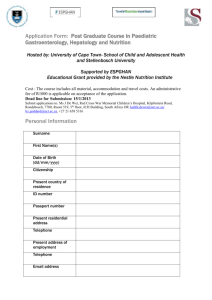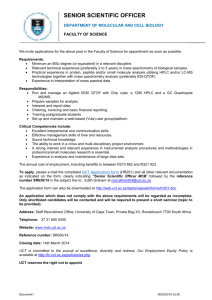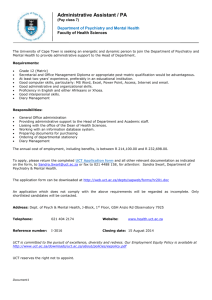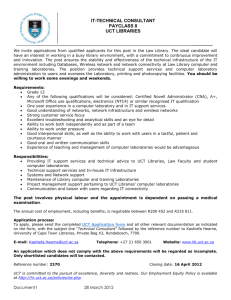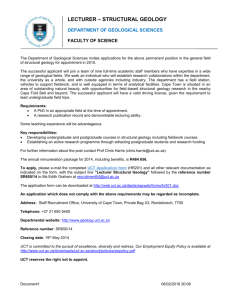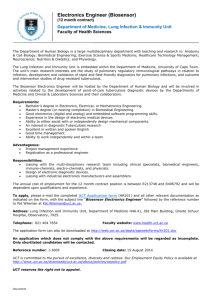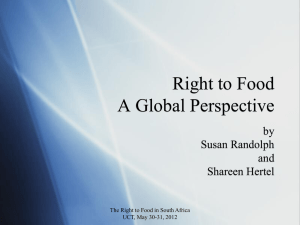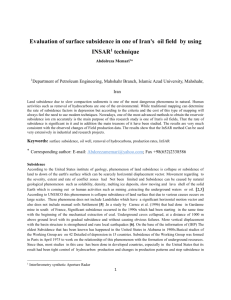Microwave imagery measures deformation caused by underground
advertisement
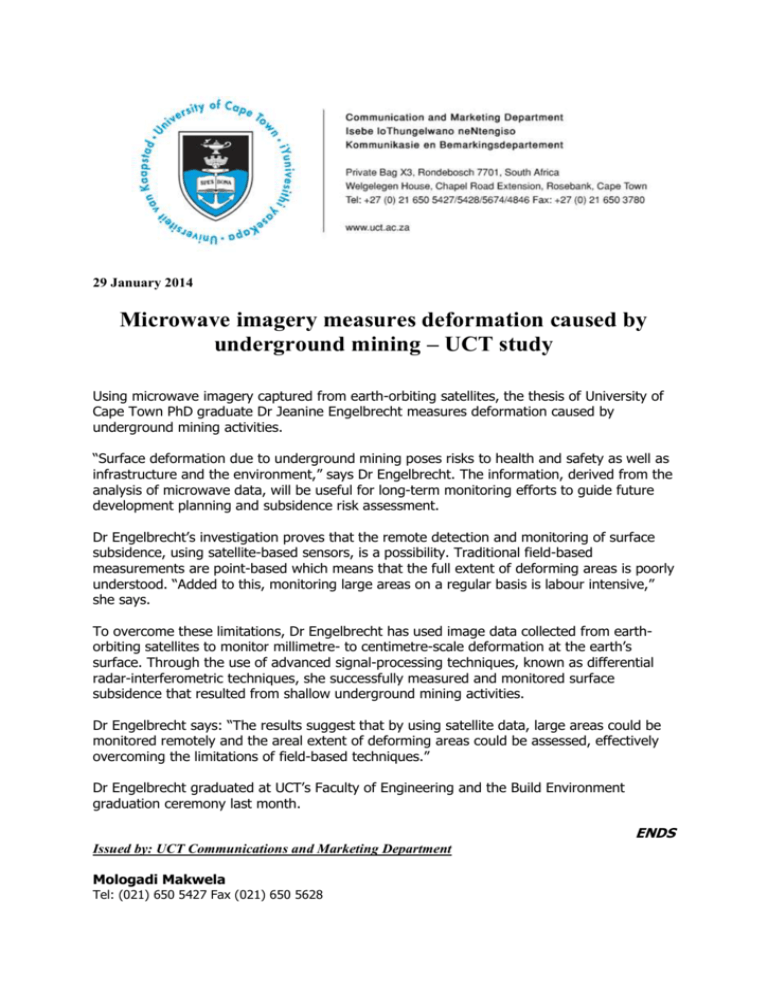
29 January 2014 Microwave imagery measures deformation caused by underground mining – UCT study Using microwave imagery captured from earth-orbiting satellites, the thesis of University of Cape Town PhD graduate Dr Jeanine Engelbrecht measures deformation caused by underground mining activities. “Surface deformation due to underground mining poses risks to health and safety as well as infrastructure and the environment,” says Dr Engelbrecht. The information, derived from the analysis of microwave data, will be useful for long-term monitoring efforts to guide future development planning and subsidence risk assessment. Dr Engelbrecht’s investigation proves that the remote detection and monitoring of surface subsidence, using satellite-based sensors, is a possibility. Traditional field-based measurements are point-based which means that the full extent of deforming areas is poorly understood. “Added to this, monitoring large areas on a regular basis is labour intensive,” she says. To overcome these limitations, Dr Engelbrecht has used image data collected from earthorbiting satellites to monitor millimetre- to centimetre-scale deformation at the earth’s surface. Through the use of advanced signal-processing techniques, known as differential radar-interferometric techniques, she successfully measured and monitored surface subsidence that resulted from shallow underground mining activities. Dr Engelbrecht says: “The results suggest that by using satellite data, large areas could be monitored remotely and the areal extent of deforming areas could be assessed, effectively overcoming the limitations of field-based techniques.” Dr Engelbrecht graduated at UCT’s Faculty of Engineering and the Build Environment graduation ceremony last month. ENDS Issued by: UCT Communications and Marketing Department Mologadi Makwela Tel: (021) 650 5427 Fax (021) 650 5628 Cell: 078 258 3965 E-mail: loga.makwela@uct.ac.za University of Cape Town Rondebosch Website: www.uct.ac.za Follow us on Twitter: @UCT_news
